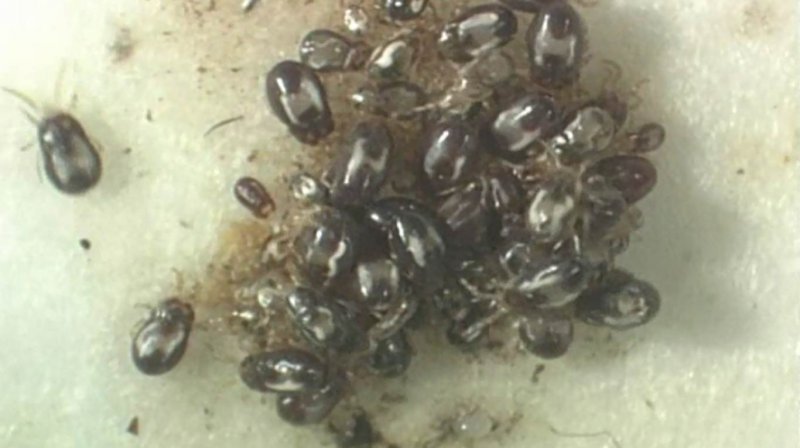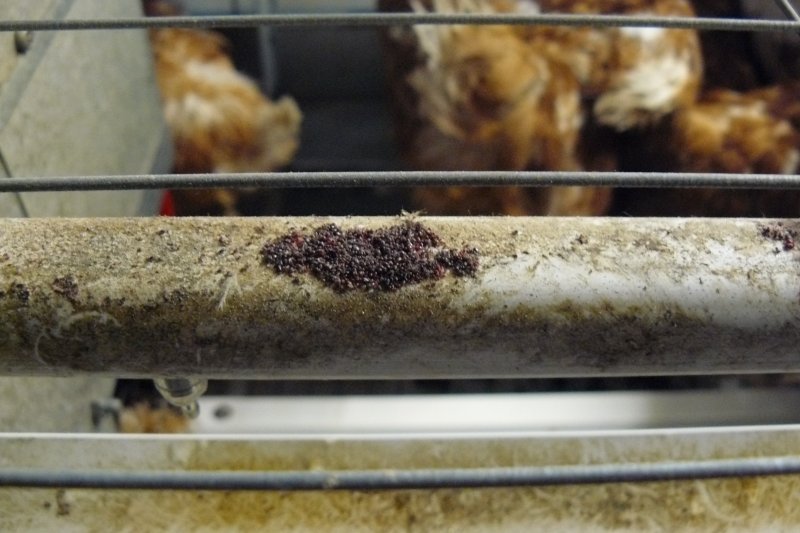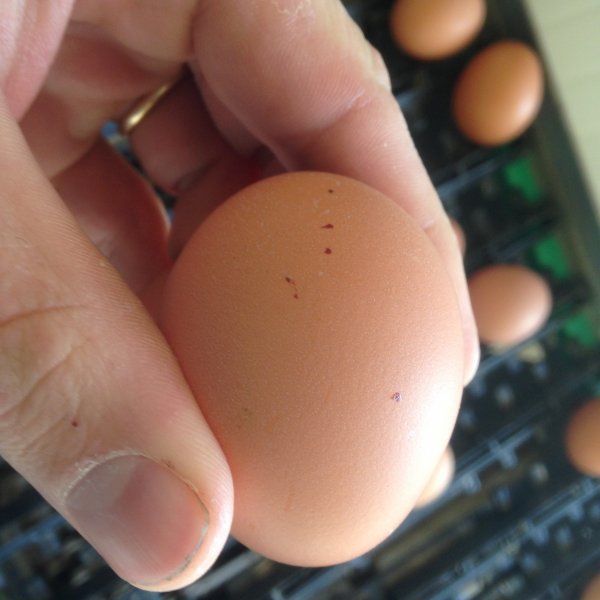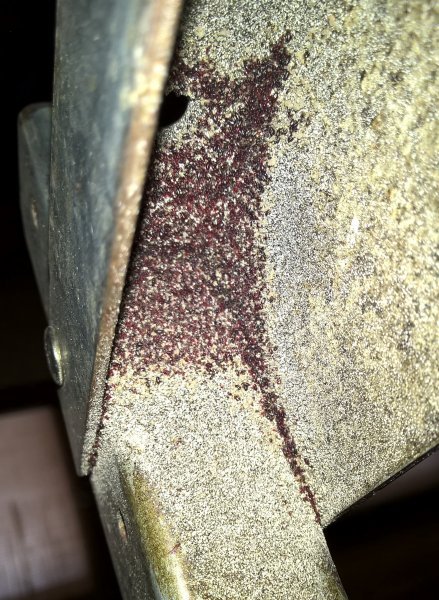Red mite
Dermanyssus gallinae

The red mite is a blood-sucking mite that affects many birds, especially chickens. Several species can be considered under the term red mite but the main one is Dermanyssus gallinae. This species measures a few millimeters in the adult state with a variable coloring according to its physiological state (grey, red or black).
Red mite

Life cycle
Egg: is ovoid white and measures 0.2 to 0.4 mm. Hatching occurs 48 hours after laying at 25°C. These eggs are laid scattered in the environment of the hens. They can also be found in quantity in aggregates.
Larva: is white and has 3 pairs of legs. It molts in 24 hours at 25°C into a protonymph. The larva is mobile but slow. She does not take a blood meal.
Nymphs: whitish to greyish have like the adults 4 pairs of legs. Two stages: protonymph and deutonymph. Each stage performs a blood meal. The nymphs are very mobile and spread throughout the habitat of the hens.
Adults: Both males and females feed on blood. The male performs only one blood meal, the females after each spawning. The male is bright red and stays red. Females change from red to dark gray or black depending on their condition. The female lays about 30-35 eggs during her lifetime. From egg to adult, the life cycle can be counted in 7 days at 25 ºC. The population doubling time is very fast.

Identification
Red mites affect many species of birds. They are present in their surroundings. In poultry, the offending species is mainly Dermanyssus gallinae, which mainly affects hens. Although capable of affecting all hens, the parasites are mainly found in the laying hen and breeding sector rather than in broilers. This is mainly linked to the rearing time which induces a strong propensity to densify the parasites on site. This species is characterized by its great resistance to climatic conditions and the absence of food (9 to 12 months) and by its ability to stay in the environment rather than on its host. After the blood meal the Dermanyssus gallinae leaves its host and returns to hide in its habitat. Contamination by the parasite is mainly linked to the sector (equipment, animals, persistence of parasites on site); it is accepted that this contamination does not come from individuals from wild fauna. This demonstrates the difficulty of eliminating the parasite once installed in a building.

Natural habitat and behavior
The red mite likes to stay in the environment of its hosts. They are present in all types of breeding but mainly in laying hens. These red mites hide in the smallest interstices of the material and can form clusters. Wooden structures and aviaries are generally more difficult to treat because they provide more hiding places for pests. Red mites like areas near the resting and egg-laying areas of their hosts (nests, perches, duckboards). In these aggregates one easily finds adults, eggs, larvae and pupae. Red mites are sensitive to light, they tend to hide during the day and start moving and feeding during the night. on average 30 minutes after its meal the mite returns to its hiding spot.
Nuisance/
economical damage

Stress and pathogens
Red mites are a source of nuisance for hens and breeders. They take advantage of the hens' periods of inactivity to take their blood meals, causing stress, nervousness, drop in egg laying, anemia and even mortality. Red mites are also known to transmit many pathogens. Populations of red mites in a poultry farm can be significant.

Degradation of product quality
In addition to causing stress, a drop in egg laying and mortality, the presence of red mites can cause a drop in the quality of the eggs through contamination. By rolling the eggs crush the red mites present on the egg belt or on the eggs and stain them. In the event of a heavy infestation, red mites may be present on the eggs during collection, causing discomfort for operators.

Buildings and equipment as shelters
Red mites lodge in equipment and in the building. They have a very high resistance and can survive more than a year without eating. They slow down their metabolism in periods of vacuum and are therefore less sensitive to treatments. All of these conditions make controlling red mites with traditional control methods difficult. It is sometimes impossible to completely eradicate the parasite and waves of red mites follow one another depending on the batch and the period. The installation of predators offers particularly interesting perspectives in the long term or in combination with other methods. Red mites are visible to the naked eye in the adult state and the clusters are clearly identifiable.


The protocol to tackle red mite is effective thanks to the complementarity of the products. Preventively installing a protocol adapted to your farm makes it easier to prevent and limit infestations of red mites.
- Androlis & Taurus
- Androlis sachet
- Androlis bottle
- Appicure liquid
Get in touch
A successful approach to biological fly control is based on strategically planned releases.
Please contact us to discuss the possibilities.

